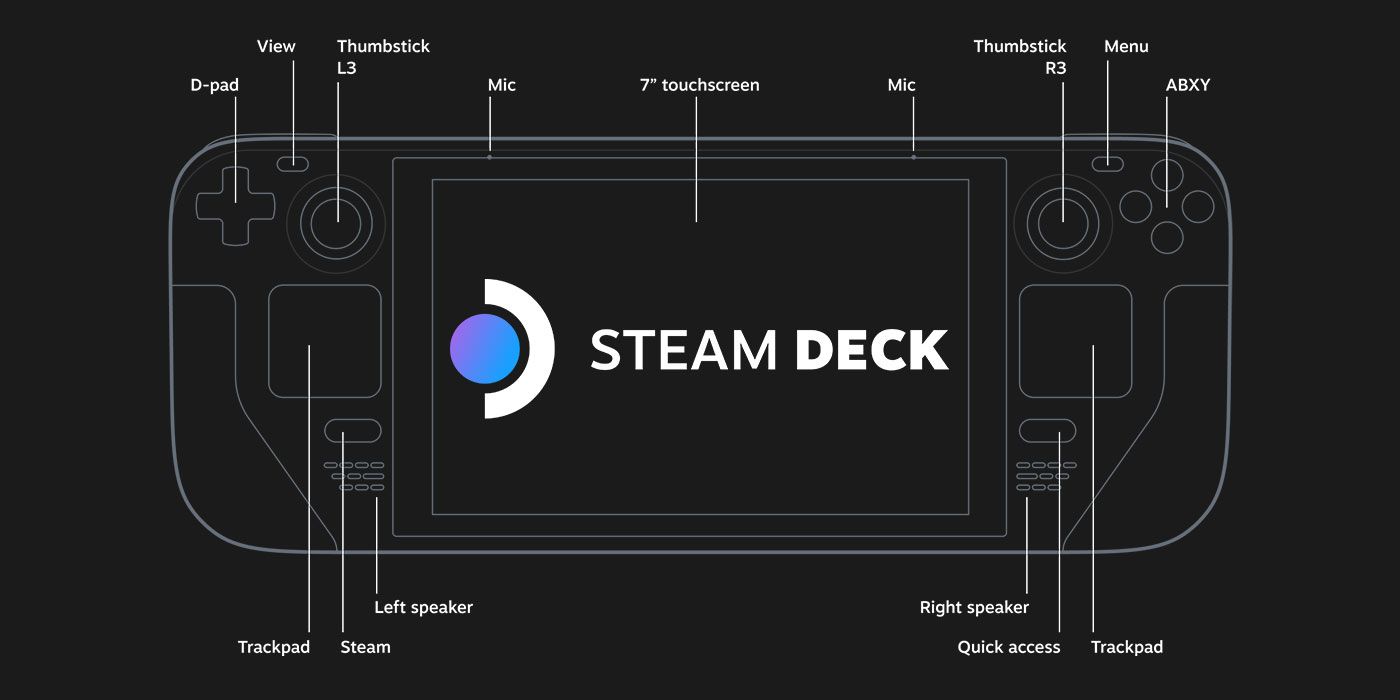Valve's release of full technical specs of its upcoming Steam Deck handheld console has revealed some previously missing information on Steam Deck models' performance and storage capabilities. While this is the company’s first attempt at a handheld gaming PC, it isn’t its first foray into making hardware, as it previously released the Steam Machine and its accompanying uniquely-designed Steam Controller in 2015. Both devices were eventually discontinued due to low sales.
As for the Steam Deck, Valve has announced three variants of the device, with the main difference between the three being their included storage devices and other additions, such as carrying cases and exclusive Steam bonuses. The most affordable version of the Steam Deck includes 64GB of eMMC storage while the more expensive two come with NVMe storage at 256GB and 512GB capacities, respectively. The Steam Deck is also set to affect Valve’s other products as the company has announced that Steam’s Big Picture UI, which was initially designed for HTPCs (Home Theater PC), will eventually be replaced with Steam Deck’s UI in the future.
While Valve has confirmed that the Steam Deck utilizes 2230 M.2 NVMe SSDs, Eurogamer reports that while Valve has confirmed that the Steam Deck utilizes 2230 M.2 NVMe SSDs, it has yet to explicitly announce if it’s possible for users to upgrade it or how difficult it will be to do. While the company has revealed that even the lower-end variant of the Steam Deck will be equipped with an SSD slot, it also said that it would require opening up the device in unsupported ways to get access to it, voiding the Steam Deck's warranty. Valve also revealed that it has partnered with AMD for a custom APU for the Steam Deck that impressively features a Zen 2 CPU and an RDNA GPU, the latter of which is a newer architecture. However, the custom APU will be limited by a maximum power draw of 15 watts, which puts the performance of the Steam Deck into question.
With the handheld running a CPU and GPU from different architectural generations, it’s difficult to compare the Steam Deck's performance to AMD’s other APUs based purely on specifications. The aforementioned 15-watt power draw limit will also be a major factor in how the Steam Deck performs. The decision to limit the power draw of the APU to a maximum of 15 watts is most likely due to both optimizing thermals and battery life. According to Valve, the Steam Deck will have a battery life of two to eight hours of gameplay.
In spite of the lack of information on both the Steam Deck’s storage and performance, excitement for the new device is still running high. As Valve continues to release more information on its handheld gaming PC in the months leading up to its release, that excitement is bound to increase. If the Steam Deck ends up being successful at launch, it could potentially impact Valve's video games in at least a few ways.
The Steam Deck will be available in December 2021.
Source: Eurogamer

